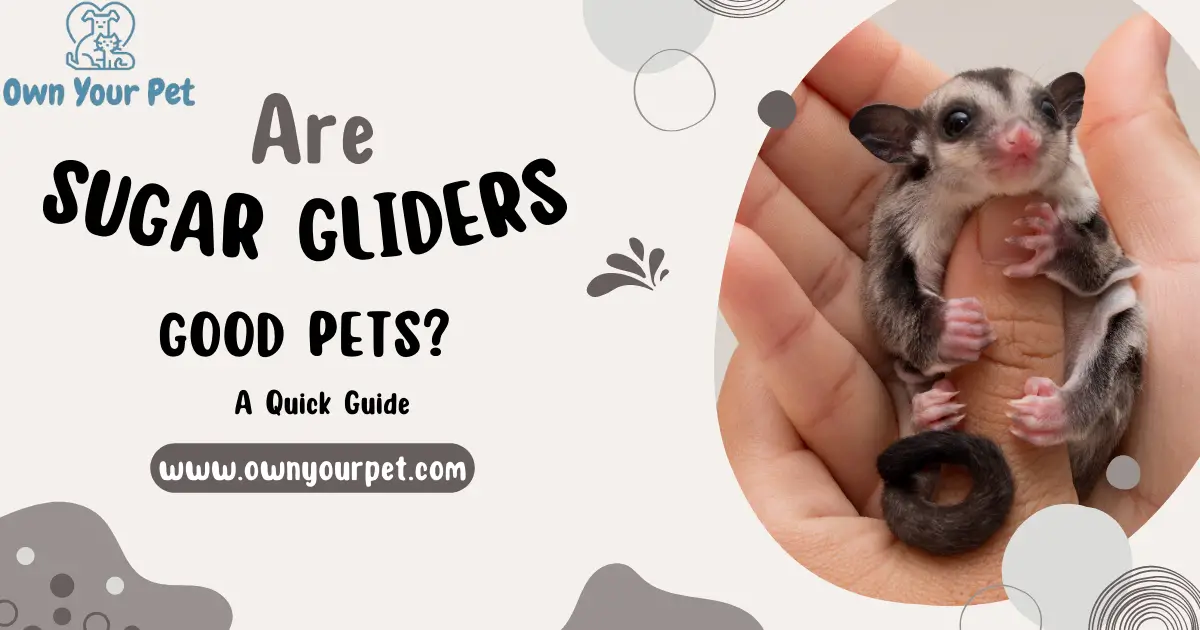Hello, pet lovers! If you’re on the hunt for a unique and adorable pet, you might have come across the Sugar Glider. These small marsupial wonders have captured the hearts of many with their big eyes and playful personalities. But the question remains, “Are Sugar Gliders Good Pets?”.
In this guide, we will explore the key aspects of Sugar Glider ownership, including their care requirements, socialization needs, and the responsibilities that come with providing a loving and enriching environment. So, let’s embark on this journey and discover if Sugar Gliders are the right fit for you as a pet.
Are Sugar Gliders Good Pets?

Sugar gliders have become increasingly popular as pets due to their playful, curious, and social nature. These small marsupials, closely related to kangaroos and koalas, are nocturnal tree-dwellers with large eyes that help them navigate in the darkness.
With their unique and engaging mannerisms, many people are captivated by these creatures and wonder if they make good pets.
While sugar gliders can be a delight to have in your home, they do require a considerable amount of care and attention. Frequent handling is necessary to keep them tame, and they also need ample space for exercise. Their diet is very particular, and it’s crucial to educate yourself about their needs before taking one on as a pet.
Additionally, sugar gliders are social animals that thrive in groups, so it’s best to keep at least two together to ensure their well-being and happiness.
In conclusion, sugar gliders can make good pets for the right owner who is prepared to dedicate time and effort to their care. With proper handling, nutrition, and companionship, a sugar glider can flourish as a domesticated companion.
But be aware that they are not for everyone and may not be suitable for those who are new to pet ownership or those who are unable to provide the necessary commitment.
What Are Sugar Gliders?
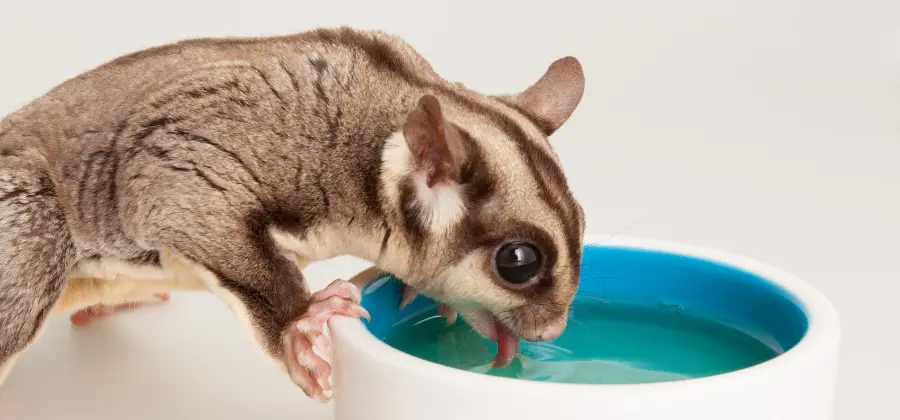
Sugar gliders are small, nocturnal marsupials native to the forests of Australia, New Guinea, and Indonesia. They are named for their unique ability to glide through the air using a special membrane called a patagium, which stretches between their front and rear limbs.
This allows them to move quickly and gracefully from tree to tree in search of food. They have large eyes that help them navigate in the darkness, making them well-adapted to their nighttime lifestyle.
These fascinating creatures have gained popularity as pets in recent years due to their playful, curious, and social nature. However, it’s important to note that sugar gliders are not for everyone, especially beginner pet owners.
They require frequent handling to stay tame, a specific diet, and ample space for exercise. If you’re considering a sugar glider as a pet, it’s crucial to educate yourself about their needs and requirements before making the commitment.
In the wild, sugar gliders live in social groups called colonies, which typically consist of six to twelve members. They form strong bonds with each other and rely on their companions for warmth and protection. When kept as pets, it’s important to provide them with at least one companion to prevent boredom, restlessness, and depression.
Sugar gliders have a unique diet that mainly consists of nectar, fruit, insects, and tree sap. In captivity, they require a balanced diet that provides sufficient nutrients and replicates their natural food sources. Their diet should include fresh fruits and vegetables, insects, and specialty nectar or pellet mixes specifically designed for sugar gliders.
To keep your sugar glider happy and healthy, it’s important to provide them with a spacious living environment that allows them to jump, glide, and explore. A multi-leveled cage or enclosure, preferably taller than it is wide, will give them the space they need to exercise their natural behaviors and instincts.
Overall, sugar gliders can be fascinating and delightful pets, but they require dedicated care and attention. It’s essential to fully understand their specific needs and be prepared for the commitment involved in owning these unique marsupials.
The Basic Requirements
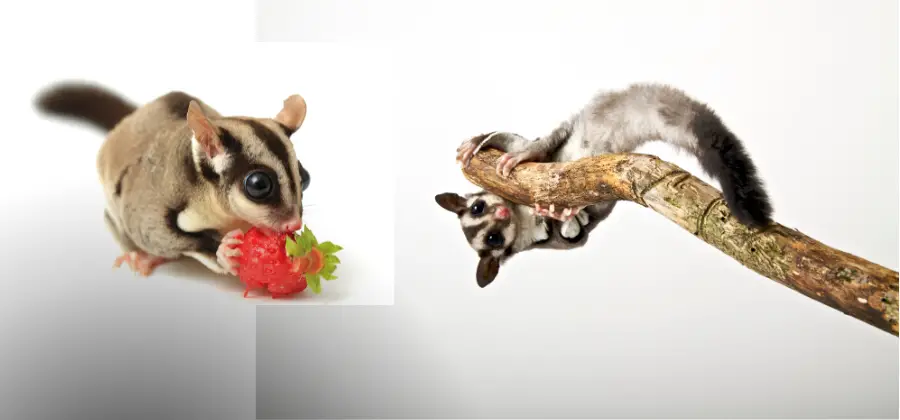
Before you decide to bring a sugar glider into your home, it’s important to understand their basic requirements to ensure they have a happy and healthy life.
Housing and Environment
Sugar gliders are tree-dwelling marsupials that require a large, multi-leveled living space that’s taller than it is wide to accommodate their jumping and gliding abilities. The cage should be made of sturdy material, with narrow spacing to prevent your pet from escaping. Inside the cage, provide ample branches, perches, and hiding spots for your sugar glider to explore and feel secure.
As nocturnal animals, sugar gliders are most active during the night. Ensure their environment is quiet during the day so they can rest without disturbances. The optimal temperature range for sugar gliders is between 70-80°F (21-27°C), so make sure their living space maintains a consistent temperature within that range.
Cleanliness is crucial in a sugar glider’s cage. Regularly clean and disinfect the cage and replace the bedding to maintain a hygienic environment.
Diet and Nutrition
Sugar gliders have a specific diet that is crucial to their health. In the wild, they primarily eat fruit, vegetables, insects, and small vertebrates. In captivity, their diet should consist of:
- Fruits and vegetables: Provide a variety of fresh, chopped fruits and vegetables daily. Some favorites include apples, oranges, bananas, berries, carrots, and leafy greens. Avoid feeding your sugar glider avocados, rhubarb, and onions, as these are toxic to them.
- Protein: Sugar gliders require an adequate amount of protein in their diet. Live insects such as mealworms, crickets, and earthworms are a popular choice. Alternatively, you can offer them cooked lean meat, eggs, and small amounts of low-fat yogurt, cottage cheese, or tofu.
- Supplements: To ensure your sugar glider is receiving all the necessary vitamins and minerals, consider providing them with a commercial sugar glider supplement or a homemade diet that includes calcium-rich ingredients.
It’s essential to closely monitor your sugar glider’s dietary intake and consult a veterinarian specializing in exotic animals to address any nutritional concerns. Failure to provide a proper diet could lead to severe health issues for your sugar glider.
Do Sugar Gliders Make Good Pets? Watch this video:
Sugar Glider Behavior and Interaction
Sugar gliders are known for their playful and curious nature, making them quite entertaining pets to have around. However, it’s essential to understand that these small marsupials are also nocturnal animals, meaning they are active mostly during the night.
These social creatures usually live in groups, so it’s beneficial to have more than one sugar glider in the household. In the wild, they can be found in groups of six to twelve, so companionship is essential for their overall well-being. Having a companion helps prevent boredom, restlessness, and depression in sugar gliders.
When it comes to their ability to glide and jump, sugar gliders are quite agile and active. They require ample space to move around and exercise. Providing a large, multi-leveled living space that’s taller than it is wide can help accommodate their need to jump and glide.
Being social animals, sugar gliders can form strong bonds with their owners, especially if they are kept alone and handled frequently. However, it’s important to have enough time to interact with them daily, so they remain tame and well-socialized.
Sugar gliders are also vocal animals, producing a variety of noises to communicate their emotions. One common noise they make is called “crabbing,” which typically occurs when they feel scared, upset, or threatened.
As you spend more time with your sugar glider, you’ll learn to understand and appreciate their unique vocalizations and behaviors.
Health and Physical Care
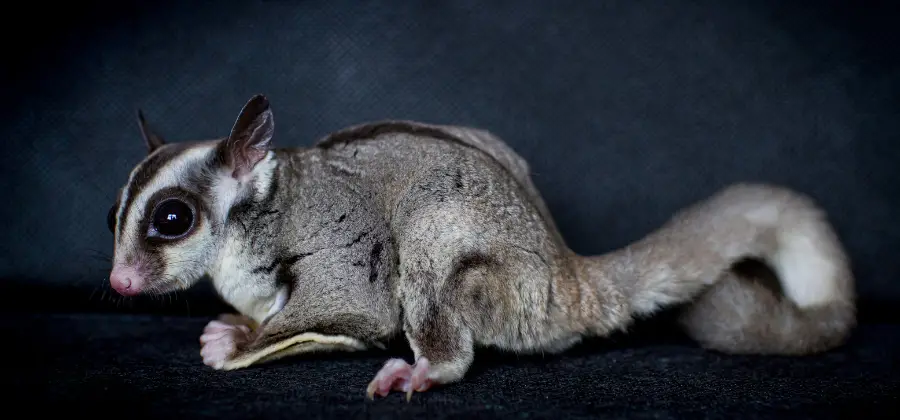
Important Health Considerations
Sugar gliders are small, social marsupials that can make fun and intriguing pets for the right person. They have a long lifespan of up to 15 years when cared for properly, which means that they can become long-term companions for their human caretakers.
However, there are some important health considerations to keep in mind when it comes to owning a sugar glider.
One important aspect of caring for a sugar glider is their nutrition. These exotic animals have unique dietary requirements, including a diet that’s rich in nectar and insects. Feeding them the incorrect foods can lead to health problems down the road.
Another factor to consider is their size and weight. Males typically weigh between 100-160 grams, while females weigh 80-130 grams. This means that they are small animals, which can make them susceptible to injury and stress if they are not handled gently.
Caring for Their Physical Needs
Sugar gliders are nocturnal animals, meaning they are active during the night. Their large eyes help them navigate in the darkness. Providing a safe environment for them to explore and climb is essential for their overall well-being. They need a large, multi-leveled living space that’s taller than it is wide so they can jump and glide.
Taking care of a sugar glider’s ears is also important, as they are sensitive creatures. Regularly cleaning their ears and checking for any problems can help keep them healthy and stress-free.
As with any pet, it is essential to have a trusted veterinarian who specializes in exotic animals. Not all vets have experience with sugar gliders, so finding one who is familiar with their specific needs is crucial. Regular veterinary visits can help ensure your pet stays in good health.
Bonding with Your Sugar Glider
While sugar gliders can be social and enjoy companionship, some may become aggressive if not handled properly from a young age. Frequent handling is required to keep them tame and ensure they form a bond with their human caretakers. This bonding is important for reducing their stress levels and maintaining good health.
It’s essential to remember that sugar gliders are exotic animals, and their owners may be illegal in certain areas. Always check local regulations before deciding to adopt one of these fascinating creatures.
The cost of owning a sugar glider can also be higher compared to other pets, as they require specialized care and veterinarian services.
In summary, sugar gliders can make engaging and charming pets for individuals who are prepared to invest the time, effort, and resources necessary to keep them healthy and happy. By considering their specific health needs and ensuring proper physical care, these unique animals can thrive and provide years of enjoyment.
What kind of care do Sugar Gliders need?
Sugar Gliders require a spacious enclosure, a balanced diet consisting of fresh fruits, vegetables, and specialized glider pellets, as well as regular veterinary check-ups. They also need daily interaction, mental stimulation, and plenty of opportunities for physical exercise.
The Pros and Cons of Sugar Glider Ownership
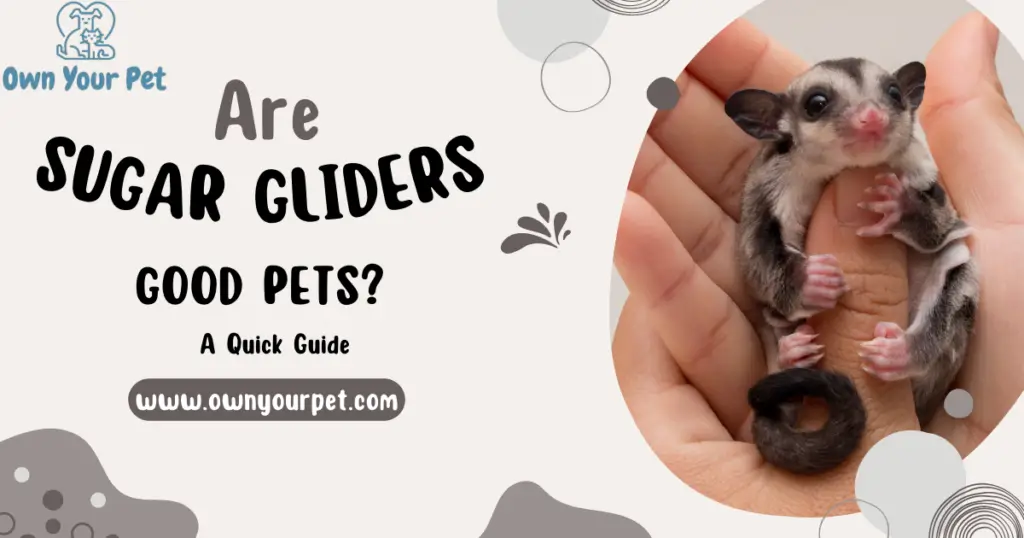
In this section, we’ll discuss the advantages and disadvantages of owning a sugar glider as a pet.
The Advantages
- Long lifespan: Sugar gliders can live for up to 15 years when cared for properly, which is longer than many other pocket pets.
- Strong bonding with humans: These marsupials can form strong bonds with their owners and are known for their social and playful nature.
- Natural cleanliness: Sugar gliders groom themselves regularly and have minimal odor.
- Low veterinary needs: Sugar gliders generally do not require frequent vet visits, provided they receive proper care and a balanced diet.
The Disadvantages
- Unique dietary requirements: Sugar gliders are omnivores with specific dietary needs. Meeting their nutritional requirements can be challenging and time-consuming.
- Frequent handling: To keep them tame and sociable, sugar gliders require regular handling, which may be difficult for busy families or those who are away from home often.
- Exercise and stimulation needs: These pets are active and intelligent, needing ample space to explore, exercise, and various forms of mental stimulation to avoid obesity, depression, or self-mutilation.
- Social living: Sugar gliders are social creatures that thrive in groups. Keeping a single sugar glider can lead to boredom, depression, and destructive behavior. It’s best to keep at least two sugar gliders together.
- Legal constraints: In some regions, sugar gliders may be subject to permits or restrictions; research and comply with local laws before adopting this pet.
Remember to always do your research before adopting any pet, and make sure you can meet their specific needs and requirements. Happy gliding!
